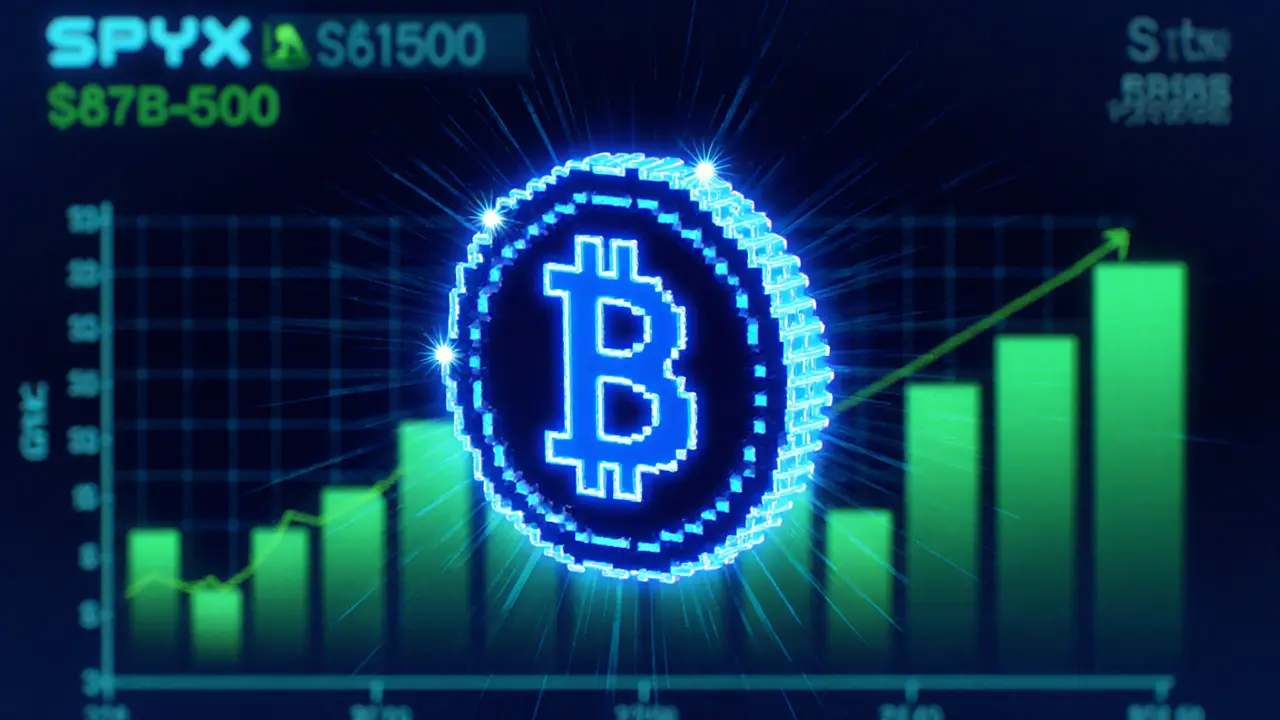Tokenized ETF: Bridging Crypto and Traditional Funds
When you hear Tokenized ETF, a hybrid product that packages a basket of assets into a blockchain‑based token while preserving the regulatory framework of an exchange‑traded fund. Also known as tokenized exchange‑traded fund, it lets investors buy and sell shares on a decentralized ledger just like a stock, but with the speed and fractional ownership that crypto enables. ETF, an investment fund that trades on traditional exchanges and tracks an index, sector, or commodity provides the familiar structure – diversification, liquidity, and transparent pricing. By wrapping that structure in a token, the tokenized ETF brings together the best of both worlds: the regulatory clarity of ETFs and the technological advantages of blockchain tokenization. This blend means investors can access global markets 24/7, settle trades in seconds, and own tiny slices of high‑value portfolios without a broker’s middleman.
How Tokenization and DeFi Power the New Asset Class
The magic behind a tokenized ETF lies in tokenization, the process of converting real‑world assets into digital tokens on a blockchain. Tokenization turns shares, commodities, or even real‑estate stakes into immutable records that can be split infinitely, giving anyone the chance to invest with as little as a few dollars. In practice, a tokenization platform creates a smart contract that locks the underlying assets, issues corresponding tokens, and enforces compliance rules. DeFi, decentralized finance that replicates traditional financial services using open‑source protocols then adds the liquidity engines, automated market makers, and lending features that let token holders trade, borrow, or earn yield without a central authority. The combination forms a semantic triple: tokenization enables fractional ownership, DeFi provides on‑chain liquidity, and together they create a tokenized ETF that operates like a traditional fund but moves at crypto speed. Real‑world examples include platforms that issue crypto‑ETF tokens tracking S&P 500 or Bitcoin indexes, letting users gain exposure without navigating multiple exchanges.
Regulators and investors alike are watching the rise of security token, a digital representation of a regulated security that must comply with securities law. Because a tokenized ETF is essentially a security token, it must meet disclosure, custody, and anti‑money‑laundering standards. This requirement builds trust and opens the door for institutional money to participate, something pure crypto assets have struggled with. At the same time, the underlying blockchain tech offers auditability and real‑time reporting, advantages that traditional fund administrators find valuable. Looking ahead, expect more asset managers to launch tokenized ETFs, exchanges to list them side‑by‑side with stocks, and wallets to integrate seamless compliance checks. Below you’ll find a curated collection of articles that dig into the regulatory landscape, token design choices, and market trends shaping this emerging class.
SPYX Token: The SP500 Tokenized ETF (xStock) Explained
Posted By Tristan Valehart On 27 May 2025 Comments (19)

Learn what SPYX (xStock) is, how it tokenizes the SP500 ETF, where it trades, and the risks and benefits for crypto investors.
READ MORE